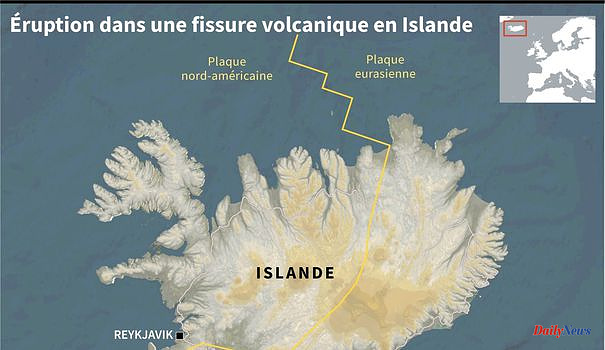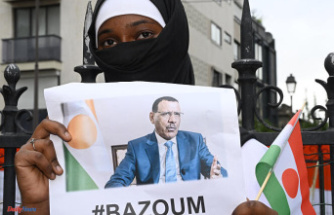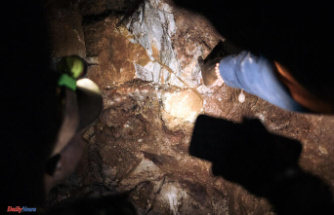The crack, located about 40 kilometers from Reykjavik, revealed jets of lava turning into smoking rock as the material cooled.
The Meteorological Institute of Iceland, which monitors seismic activity, estimated the length of the crack at around 300 meters. He said the eruption started in the Meradalir Valley, less than a kilometer from the 2021 eruption.
Onlookers moved around the area of the eruption, marveling at the sight of boiling lava and the sound of rumbling as the magma erupted, an AFP journalist noted.
Despite the absence of an ash cloud, the institute considered "possible that pollution is detected due to gas fumes".
Gases emanating from volcanic eruptions, including sulfur dioxide, can rise in the immediate vicinity and pose a health hazard or even be fatal.
These types of pollution can also be carried by the wind.
On Tuesday evening, the Meteorological Institute announced that the likelihood of another eruption near Mount Fagradalsfjall "in the coming days or weeks" was considered "substantial".
Since Saturday, nearly 10,000 tremors had been detected, including two with a magnitude greater than 5.
Contacted by AFP, Iceland's National Airports Authority said no flights were affected by the volcano at the moment, adding that it was monitoring the situation "accordingly".
- New seismic activity -
"The risk to populated areas and critical infrastructure is considered very low and there has been no disruption to flights," the foreign ministry said on Twitter.
More than an hour after the eruption began, a commercial flight could be seen flying low over the eruption site and heading for Keflavik, Reykjavik's main airport.
Last year, Iceland experienced an eruption in a relatively easily accessible area, making the event a real tourist attraction.
The eruption, which saw more than 140 million cubic meters of magma pour out over a six-month period, attracted more than 430,000 visitors according to the Icelandic Tourist Board.
The eruption was officially declared over after nine months, in December 2021.
On Wednesday, the emergency services and the police, on site to assess the level of danger and possible gas contamination, encouraged the population to stay away from the area.
Icelandic President Gudni Johannesson also called for vigilance. "I just want people to be careful and know more before they jump into the unknown. If this eruption is like the last, there will be enough time, so there's no reason to rush," he told English media Iceland Monitor.
Mount Fagradalsfjall belongs to the Krysuvik volcanic system, located on the Reykjanes peninsula in southern Iceland.
Before last year, the Reykjanes peninsula had not been the scene of eruptions for nearly eight centuries, but Icelandic specialists point out that the region has entered a new period of volcanic activity.
Iceland has 32 volcanic systems currently considered active, the most in Europe.
On average, the country experiences an eruption every five years.
Iceland straddles the Mid-Atlantic Ridge, a fissure separating the Eurasian and North American tectonic plate.
The movement of these plates is partly responsible for the country's intense seismic activity.












